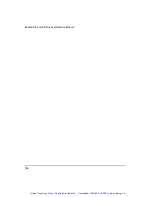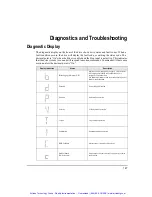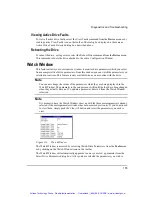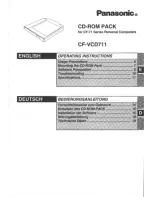
140
Epsilon Eb and EN Drives Reference Manual
The Line Voltage must never be set to 115 VAC if the applied voltage is actually 230
VAC. This can cause drive instability and failure.
Determining Tuning Parameter Values
For optimum performance you will need to enter the actual system parameters into the drive.
This section discusses the methods which will most accurately determine those parameters.
Note
If you have an application which exerts a constant unidirectional loading throughout the
travel such as in a vertical axis, the inertia tests must be performed in both directions to
cancel out the unidirectional loading effect.
Initial Test Settings
When running the tests outlined in this section, the motor and drive must be operational so
you will need to enter starting values.
If your application has less than a 10:1 inertia mismatch, the default parameter settings will
be acceptable. If the inertial mismatch is greater than 10:1, use the following table for initial
parameter settings.
Determining Friction
This parameter represents friction that increases proportionally as motor velocity increases.
The viscous friction of your system can be determined by reading the percent of continuous
torque required to operate the loaded motor at two different speeds.
Consider the following before determining the Friction:
• The most consistent readings can usually be obtained at motor speeds higher than 500
RPM but lower test speeds can be used if necessary.
Parameter
Setting
Friction
0.00
Inertia Ratio
1/3 to 1/2 Actual
Response
500/Inertia Ratio
High Performance Gains
Disabled
Feedforwards
Disabled
Line voltage
Actual Applied
Artisan Technology Group - Quality Instrumentation ... Guaranteed | (888) 88-SOURCE | www.artisantg.com
















































